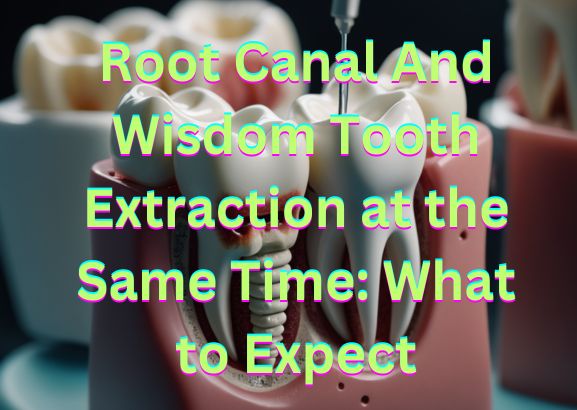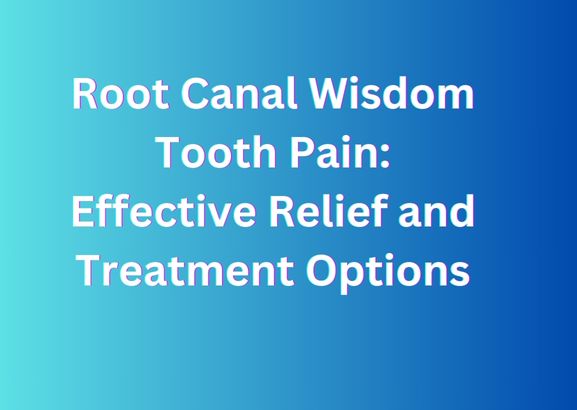Signs of Infection After Wisdom Tooth Removal?
Last Updated on 6 months by DR. ALBIN SIPES
After having wisdom teeth removed, it is normal to experience some bleeding and swelling. However, if the bleeding or swelling gets worse, this may be a sign of infection. Other signs of infection include fever, pain that gets worse instead of better, and redness or pus around the extraction site.
If you’ve had your wisdom teeth removed, you may be wondering what the signs of infection are. We marked some things to look for-
1. Pain – This is the most common symptom of an infection. You may experience pain at the site of the extraction, or you may have a generalized toothache.2. Swelling- Another common symptom is swelling in the face and jaw. This can be accompanied by pain and tenderness to touch.3. Redness or bruising around the extraction site- These are normal side effects of surgery, but if they persist or worsen, it could be a sign of infection.4. Fever or chills-If you develop a fever or start feeling chilled, it could be a sign that your body is fighting off an infection.

Credit: oralfacial.com
How Common is Infection After Wisdom Tooth Removal?
Wisdom tooth removal is a very common procedure, and infection after wisdom tooth removal is actually quite rare. But in the department of surgery sometimes infection can come. The most important thing you can do to prevent infection after your surgery is to follow your dentist’s or oral surgeon’s instructions carefully.
This means keeping the area clean and dry and taking any antibiotics that are prescribed. If you develop any signs of infection, such as fever, persistent pain or swelling, redness or drainage from the surgical site, be sure to contact your dentist or oral surgeon right away.
How Do I Know If I Have an Infection After Tooth Extraction?
After you have a tooth extracted, it’s normal for your mouth to bleed. You may also have some swelling and bruising around the area. It’s important to control the bleeding and swelling to help prevent infection.
If the bleeding doesn’t stop after 30 minutes, or if it starts again after stopping, place a clean gauze pad over the extraction site and bite down on it firmly. If the bleeding is still uncontrolled, call your dentist. You can also reduce swelling by applying ice to the outside of your cheek for 20 minutes at a time.
Do this as soon as possible after the extraction and continue for 3 days. To avoid damaging your skin, put a thin cloth between the ice and your skin. It’s normal to have some pain after an extraction.
You can take over-the-counter pain medication such as ibuprofen (Advil) or acetaminophen (Tylenol) according to package instructions. Avoid using aspirin because it can make you bleed more. If you were given a prescription for pain medication, follow the directions on how often to take it.
Don’t drink alcohol or drive while taking these medications because they can make you drowsy. If your pain is severe or lasts longer than 3 days, call your dentist.
Infections after Wisdom Teeth Removal
How to identify Signs of Infection After Tooth Extraction?
Tooth extraction is a common dental procedure. It is usually done to remove a tooth that is damaged, decayed or infected. Infection after a tooth extraction is not uncommon and can occur when bacteria enter the empty socket where the tooth was removed.
The signs of infection after tooth extraction can vary from mild to severe and include: –
Swelling:
This is the most common sign of infection after tooth extraction. The swelling may be localized around the extraction site or it may spread to other areas of the face, neck or head.
Pain:
Pain is another common symptom of infection after tooth extraction. You feel pain some hours or feel good some hours.
Redness:
The area around the extraction site may appear red and inflamed.
Bleeding:
Some bleeding is normal immediately after extraction but if it continues for more than a few hours or if it becomes heavy, this could be a sign of infection. If you experience any of these symptoms after having a tooth extracted, it’s important to see your dentist right away as treatment will be necessary to clear the infection and prevent further complications.
Late Infection After Wisdom Teeth Removal
Wisdom teeth typically erupt during your late teens or early twenties. For many people, wisdom teeth removal is a routine procedure that helps to ensure good oral health.
However, in some cases, wisdom teeth removal can lead to late infection. Late infection after wisdom teeth removal is relatively rare but it can occur. Signs of late infection include pain, swelling, and redness in the gums around the extraction site.
If you experience any of these symptoms, it’s important to see your dentist right away so that the infection can be treated. There are several reasons why late infection may occur after wisdom teeth removal. In some cases, bacteria may enter the extraction site while the area is healing.
This can happen if you don’t follow proper post-operative care instructions or if you have an underlying medical condition that slows down healing. Additionally, trauma to the extraction site during healing can also lead to infection. Treatment for late infection after wisdom teeth removal typically includes antibiotics and close monitoring by your dentist.
In some cases, additional surgery may be necessary to completely remove all infected tissue.
Infection 3 Weeks After Wisdom Teeth Removal Symptoms
If you experience any of the following symptoms 3 weeks after wisdom teeth removal, it is possible that you have developed an infection: –
- persistent pain in the extraction site
- redness or swelling around the extraction site
- pus or drainage coming from the extraction site
- fever over 101 degrees Fahrenheit
- difficulty swallowing or opening your mouth wide
- If you think you may have an infection, it is important to see your dentist or oral surgeon as soon as possible. They will be able to determine if you do in fact have an infection and prescribe antibiotics if necessary.
Bone Infection After Tooth Extraction: Symptoms?
A bone infection, also called osteomyelitis, is a serious condition that can occur after a tooth is extracted. The infection usually starts in the jawbone but can spread to other bones in the body. Symptoms of bone infection as like wisdom teeth removal infection type
If you have any of these symptoms, it’s important to see your dentist or doctor right away. A bone infection is treated with antibiotics and sometimes surgery.
What is the Process of Heal Nerve Damage After Wisdom Teeth Removal?
The wisdom teeth removal recovery process is not too easy. Every common complaint is nerve damage. This can cause a lot of pain and numbness in your mouth, jaw, and face.
It can even make it difficult to eat or drink. Fortunately, there are things you can do to help heal nerve damage after wisdom teeth removal. First, it’s important to take care of your mouth by brushing and flossing regularly.
You should also avoid hard or crunchy foods for at least a week after surgery. If you’re still experiencing pain or numbness, over-the-counter pain medication can help. If your symptoms don’t seem to be improving after a few days, contact your dentist or oral surgeon.
They may recommend additional treatment options, such as physical therapy or medications. With proper care, most people recover from wisdom teeth removal without any long-term problems.
Side Effects of Wisdom Tooth Extraction
Wisdom tooth extraction is a common dental procedure, but it’s one that comes with a few potential side effects. Here’s what you need to know about the most common ones: 1. Pain and swelling.
This is the most common side effect of wisdom tooth extraction. It’s important to take pain medication as prescribed by your dentist in order to manage the discomfort. Swelling can be managed by applying ice packs to the outside of your cheeks for 20 minutes at a time.
2. Bleeding. Some bleeding is normal after wisdom tooth extraction, but if it persists or is heavy, call your dentist right away. 3. Dry socket.
This occurs when the blood clot that forms in the empty socket after surgery dissolves too soon. Symptoms include increased pain, bad breath, and an unpleasant taste in your mouth. If you think you might have a dry socket, call your dentist right away so they can treat it appropriately (usually with a medicated dressing).
For Solving Infection What To Do After Wisdom Teeth Removal?
Wisdom teeth removal is a common dental procedure, and infection after wisdom teeth removal is relatively rare. However, if you do develop an infection, it’s important to seek treatment promptly to avoid serious complications. There are a few different ways that you can develop an infection after wisdom teeth removal.
The most common is the development of a dry socket, which occurs when the blood clot that forms in the extraction site dissolves prematurely. This exposes the underlying bone and nerve endings, making them susceptible to infection. Other less common causes of infection include bacteria getting into the extraction site through the gums or from contaminated instruments used during surgery.
In some cases, infections can also occur if there was pre-existing damage to the tooth or surrounding tissue before surgery. If you have any signs or symptoms of infection after wisdom teeth removal, it’s important to see your dentist or oral surgeon right away.
Common signs and symptoms of infection include pain, swelling, redness and drainage from the extraction site. You may also experience fever, chills and general malaise if the infection is more severe. If you develop an infection after wisdom teeth removal, your dentist will likely prescribe antibiotics to help clear it up quickly.
In some cases, they may also recommend over-the-counter pain medication or a mouthrinse containing chlorhexidine gluconate to help control pain and keep the area clean while it heals.
Conclusion
If you’ve had your wisdom teeth removed, you may be wondering what the signs of infection are. Here’s what you need to know. The first sign of infection is usually pain.
You may also have swelling and bruising around the extraction site. If the pain is severe or gets worse instead of better, it’s a good idea to call your dentist or oral surgeon. Other signs of infection include fever, chills, headache, nausea, and vomiting.
If you’re experiencing any of these symptoms, it’s important to see your dentist or oral surgeon right away so they can treat the infection before it becomes serious.



